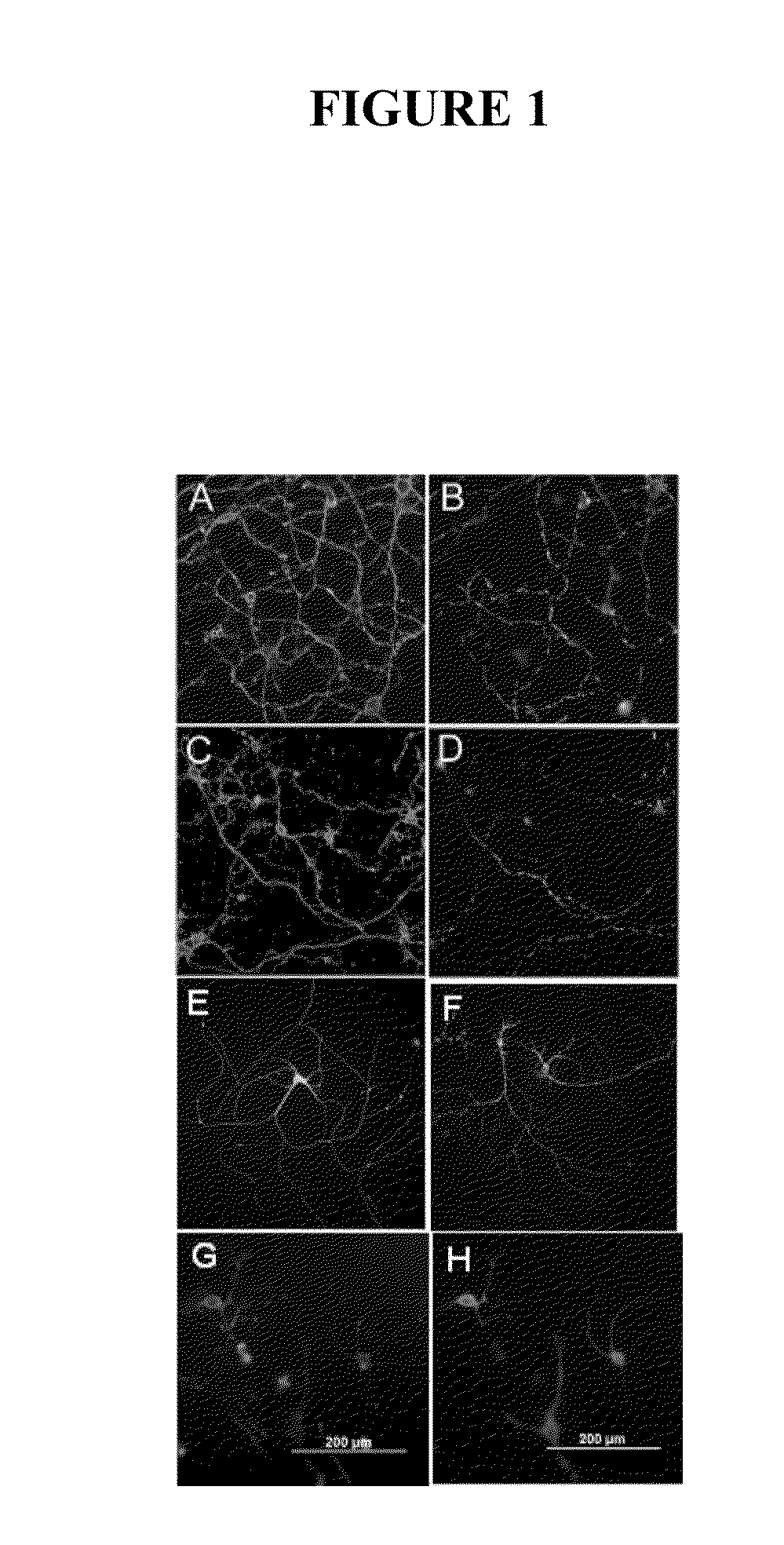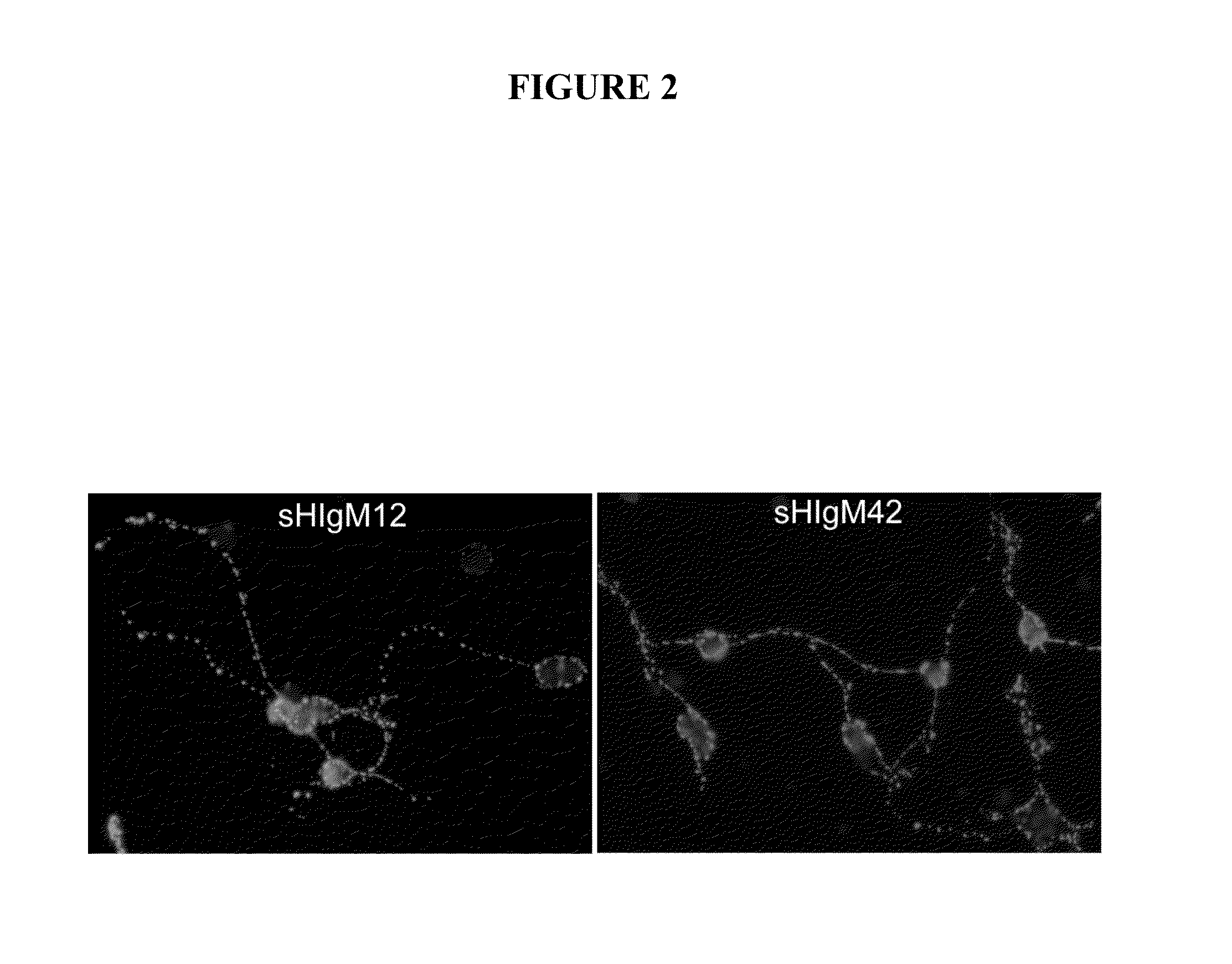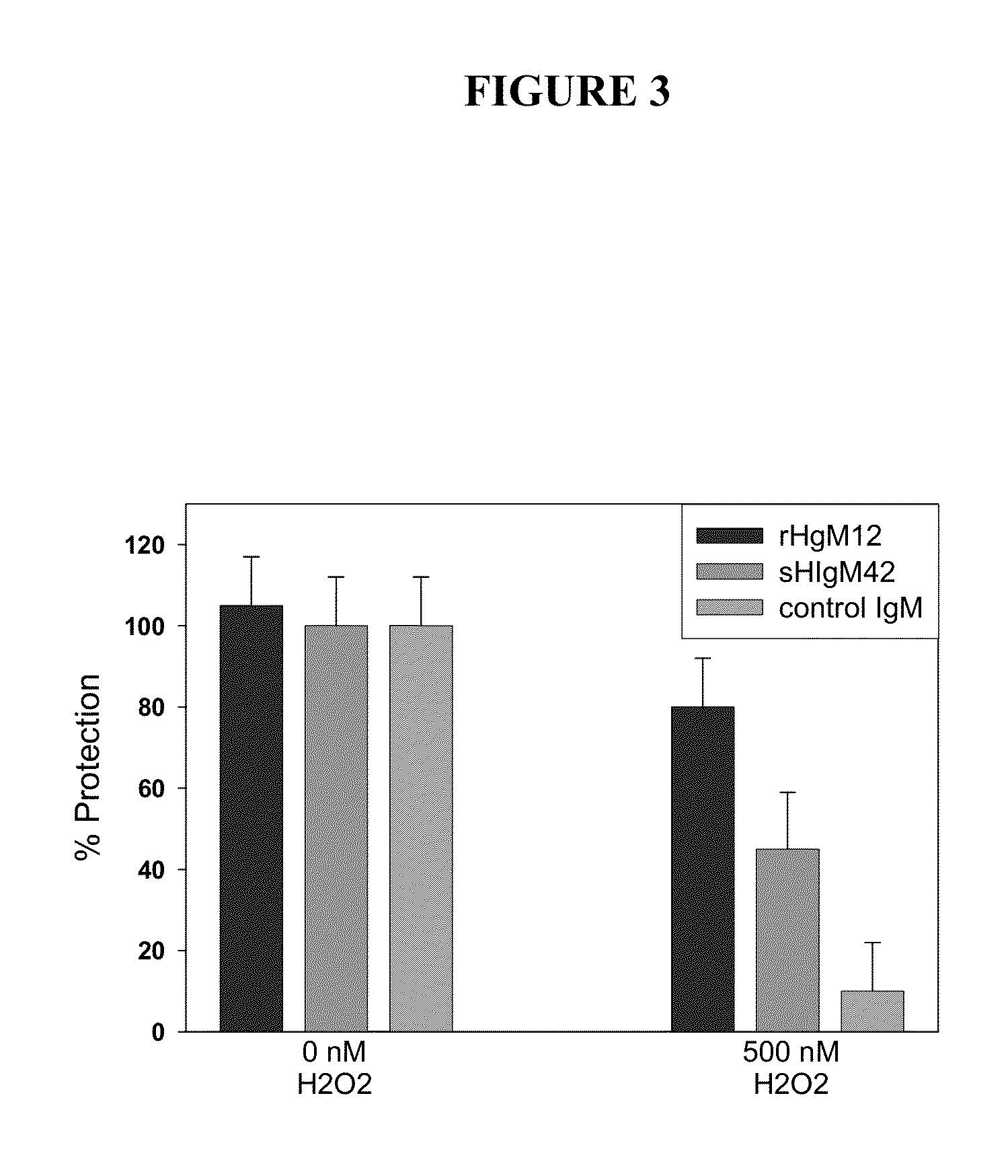Human antibodies and diagnostic and therapeutic uses thereof for the treatment of neurological disease
a human antibody and neurodegenerative disease technology, applied in the field of antibodies, can solve the problems of limiting axon regeneration in the mature mammalian central nervous system (cns), affecting the regrowth of axons, and persisting functional deficits, so as to reduce or block cell death and stabilize neurons
- Summary
- Abstract
- Description
- Claims
- Application Information
AI Technical Summary
Benefits of technology
Problems solved by technology
Method used
Image
Examples
example 1
Identification of Natural Autoantibodies (NatAbs) that Bind to Self Nervous System Cells
[0240]Natural serum human IgMs that bind to neurons were identified by screening the Mayo Clinic serum bank, which contains over 140,000 samples collected over 45 years, for candidates with a high monoclonal spike of IgG or IgM (greater than 10 mg / ml in the blood) and then testing serum for antibody binding to slices of live brain cortex and cerebellum (31). Such IgMs were then purified from positive samples and further tested for 1) binding to the surface of isolated primary neurons 2) as substrates for the support of neurite extension 3) the ability to protect neurons from apoptosis in the face of stressor molecules. This screening protocol is based on that used to identify human IgMs that bind to oligodendrocytes and promote remyelination in models of MS (22, and as described in WO 0185797). The recognition of the surface of appropriate tissues or cells appears to be an important defining char...
example 2
Human IgMs Protect Cortical Neurons from Peroxide Induced Death
[0250]Remyelination-promoting human IgMs have been shown to protect oligodendrocytes in culture from peroxide-induced activation of caspase 3 (33), a marker of active apoptosis. As set forth herein, sHIgM12 or sHIgM42, were evaluated in analogous protocols. The sHIgM12 or sHIgM42, respectively, and peroxide were added together to cultures of primary mouse cortical neurons and the degree of caspase 3 activation assayed 24 hr later (FIG. 3).
[0251]Treatment of cultured neurons with rHIgM12 resulted in protection of 80% of caspase 3 activation. Treatment of neurons with sHIgM42 was protective also with approximately of 40% of caspase 3 activation. These results were significantly different (P<0.01) compared to a control human IgM, which resulted in less than 10% protection from caspase 3 activation.
[0252]Thus, neuron-binding sHIgM12 or sHIgM42 protected cortical neurons from cell death induced by peroxide. Thus, when an indu...
example 3
Recombinant Antibodies Derived from sHIgM12
[0253]Two recombinant forms of sHIgM12 have been constructed. Each used the same expression vector as was previously utilized for recombinant IgM22 antibody (rHIgM22) for the heavy and light chains (22, 28, WO0185797). The vector includes a selectable dHfR gene expressed under the control of the SV40 promoter. A partially human recombinant IgM12 antibody form with a mouse J chain was initially constructed as follows, thereafter antibody produced in human / mouse hybridoma line F3B6 cells.
[0254]The recombinant IgM12 antibody (PAD12) vector construction was performed by inserting the heavy chain variable region cDNA with a leader sequence from the nucleotide database and complete light chain cDNA with attached leader sequence from the nucleotide database in a manner similar to that described previously (6), using the primers described below. The vector is depicted in FIG. 4 The sequence of the heavy and light chain utilized for recombinant huma...
PUM
| Property | Measurement | Unit |
|---|---|---|
| size | aaaaa | aaaaa |
| weight loss | aaaaa | aaaaa |
| pH | aaaaa | aaaaa |
Abstract
Description
Claims
Application Information
 Login to View More
Login to View More - R&D
- Intellectual Property
- Life Sciences
- Materials
- Tech Scout
- Unparalleled Data Quality
- Higher Quality Content
- 60% Fewer Hallucinations
Browse by: Latest US Patents, China's latest patents, Technical Efficacy Thesaurus, Application Domain, Technology Topic, Popular Technical Reports.
© 2025 PatSnap. All rights reserved.Legal|Privacy policy|Modern Slavery Act Transparency Statement|Sitemap|About US| Contact US: help@patsnap.com



